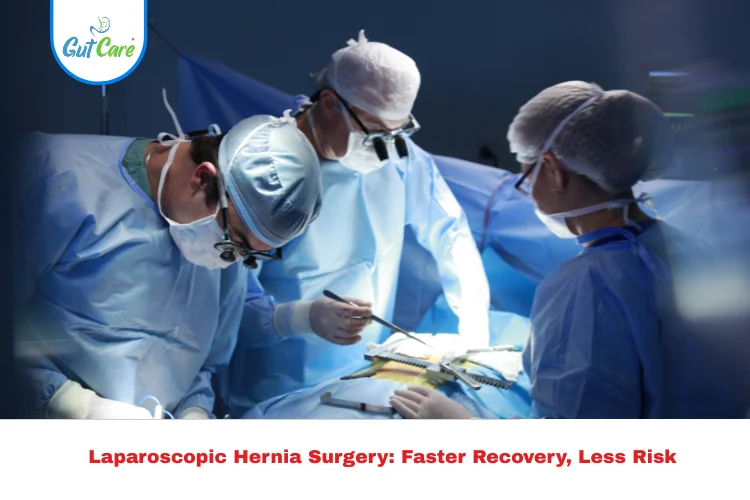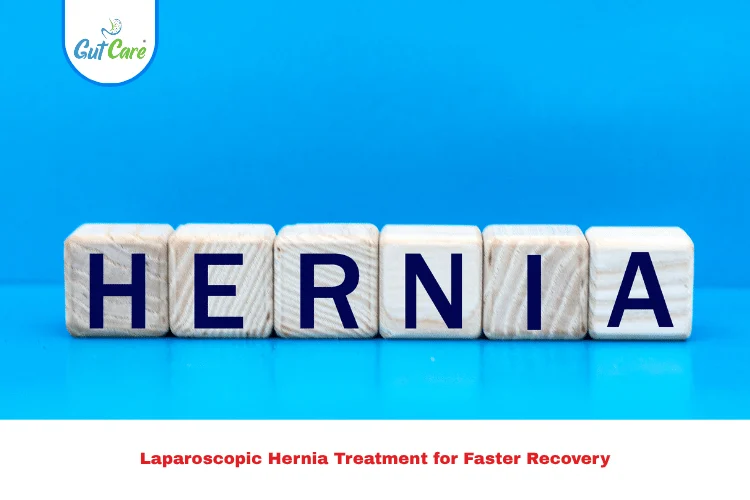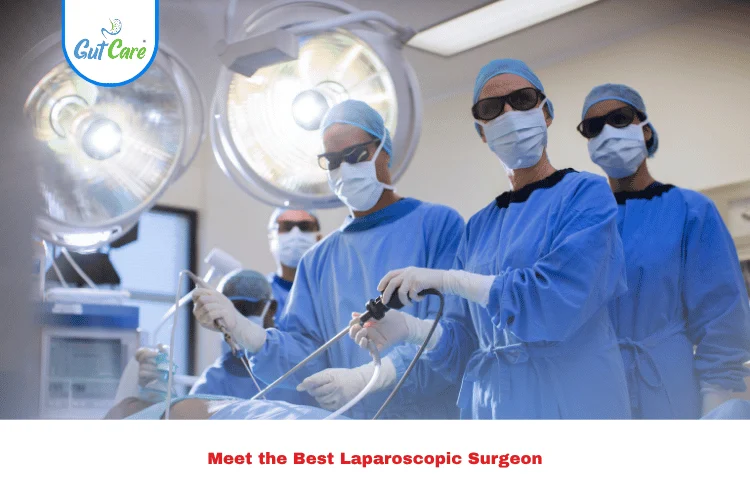Hernias are a common health issue that affects people of all ages. From discomfort and visible bulges to serious complications like strangulation, untreated hernias can be dangerous. Fortunately, Laparoscopic Hernia Surgery offers a modern, minimally invasive solution with faster recovery, reduced pain, and minimal scarring.
At Gutcare Clinics in Bangalore, a leading center for gastrointestinal and laparoscopic surgery, Dr. Yuvaraj Singh Gehlot and his expert team specialize in laparoscopic inguinal hernia repair and other advanced procedures, helping patients return to their daily lives safely and quickly.
In this blog, we’ll break down everything you need to know about inguinal hernia laparoscopic surgery, how the procedure works, its benefits, recovery, and why it’s considered the best option for hernia repair today.
What Is a Hernia?
A hernia occurs when part of an internal organ or tissue pushes through a weak spot in the muscle or tissue wall. Common types include:
- Inguinal Hernia: Occurs in the groin; most common in men.
- Femoral Hernia: Lower groin area; more common in women.
- Umbilical Hernia: Around the belly button.
- Incisional Hernia: At the site of a previous surgical incision.
- Hiatal Hernia: Upper stomach area where the stomach pushes through the diaphragm.
If left untreated, hernias may enlarge over time and cause serious complications such as intestinal blockage or strangulation.
What Is Laparoscopic Hernia Surgery?
Laparoscopic Hernia Surgery is a minimally invasive surgical procedure used to repair hernias. It involves making small incisions, inserting a thin tube with a camera (laparoscope), and using specialized tools to repair the hernia from inside the abdomen.
This technique is especially effective for inguinal hernia laparoscopic surgery, which targets the most common type of hernia.
The Laparoscopic Hernia Surgery Procedure: Step-by-Step
Understanding the procedure can help ease concerns and prepare patients better.
1. Preoperative Evaluation
Before surgery, a thorough diagnosis is made through physical examination and imaging tests like ultrasound or CT scan. Patients are advised on:
- Fasting before surgery
- Medication adjustments
- Anesthesia details
2. Anesthesia
The patient is placed under general anesthesia for comfort and safety.
3. Creating the Incisions
The surgeon makes three small incisions (usually 0.5-1 cm each) in the lower abdomen.
4. Inserting the Laparoscope
A laparoscope (a thin, flexible tube with a camera) is inserted through one incision. This allows the surgeon to view the internal organs on a high-definition monitor.
5. Hernia Repair
Using tiny instruments inserted through the other incisions, the surgeon pushes the herniated tissue back into place. A synthetic mesh is placed over the weak spot to reinforce the abdominal wall and prevent recurrence.
6. Closing the Incisions
Once the repair is complete, the tools are removed, and the incisions are closed with sutures or surgical glue.
Types of Laparoscopic Hernia Repair
- Transabdominal Preperitoneal (TAPP) Repair – Accesses the hernia from inside the abdominal cavity.
- Totally Extraperitoneal (TEP) Repair – Performed without entering the abdominal cavity; preferred for certain inguinal hernias.
Benefits of Laparoscopic Inguinal Hernia Repair
Laparoscopic surgery has transformed the way hernias are treated. Here’s why it’s the best option:
Faster Recovery Time
Most patients return to normal routines within 1–2 weeks, compared to 4–6 weeks for open surgery.
Minimal Postoperative Pain
Smaller incisions mean less tissue damage, which results in reduced pain and quicker comfort post-surgery.
Lower Risk of Infection
With fewer and smaller incisions, the chances of infection or wound complications are significantly reduced.
Better Cosmetic Results
Scarring is minimal and often not visible, making this a preferred method for appearance-conscious patients.
Ideal for Bilateral Hernias
Both sides can be repaired in a single procedure, saving time and cost.
Earlier Return to Work and Activity
Thanks to less discomfort and rapid healing, patients can resume light activities within days.
Why Choose Gutcare Clinics, Bangalore?
Gutcare Clinics, located in Bangalore, is renowned for excellence in gastrointestinal and laparoscopic surgeries. Under the leadership of Dr. Yuvaraj Singh Gehlot, a senior laparoscopic surgeon with years of expertise, the clinic offers:
- Advanced laparoscopic equipment
- Personalized patient care
- Safe, effective, and evidence-based treatment
- High success rates for inguinal hernia laparoscopic surgery
Patients not only receive world-class surgical care, but also complete support throughout the pre- and post-operative process.
Recovery After Laparoscopic Hernia Surgery
Here’s what most patients can expect after the procedure:
Immediately After Surgery
- Discharged same day or next morning
- Mild discomfort controlled with oral pain relievers
- Can walk within hours post-op
1–2 Weeks Post-Surgery
- Return to desk jobs or light activity
- Avoid heavy lifting and strenuous exercise
4–6 Weeks Post-Surgery
- Resume all regular activities
- Full internal healing is typically complete
Tips for a Smooth Recovery
- Follow your surgeon’s post-op instructions
- Take all prescribed medications
- Maintain hygiene at incision sites
- Eat light, fiber-rich meals to avoid constipation
When Should You See a Doctor?
Though laparoscopic hernia repair has a high safety profile, see your doctor immediately if you notice:
- Increasing pain or redness at the incision
- Fever or chills
- Persistent nausea or vomiting
- Difficulty urinating
- Swelling or bulge recurrence
Conclusion: Is Laparoscopic Hernia Surgery Right for You?
In short, laparoscopic hernia surgery is a safe, effective, and patient-friendly method for hernia repair. It offers a better quality of life, quicker healing, and fewer complications compared to traditional surgery.
If you’re experiencing symptoms or have been diagnosed with a hernia, don’t delay. Visit Gutcare Clinics in Bangalore and consult with Dr. Yuvaraj Singh Gehlot, one of the leading experts in laparoscopic inguinal hernia repair.
Take the step toward a healthier, pain-free life—book your consultation today.
FAQs: Laparoscopic Hernia Surgery
1. Is laparoscopic hernia surgery safe and effective?
Yes. Laparoscopic hernia surgery is safe, effective, and has fewer complications, lower pain and quicker healing than open surgery.
2. After inguinal hernia laparoscopic surgery, how long does it take to recover?
Most patients return to low activity in 7–10 days, and return to full activity in 3-4 weeks, so recovery is fairly quick.
3. Can hernias recur after laparoscopic inguinal hernia repair?
Recurrence is rare, but it has been reported. However, the use of mesh reinforcement in laproscopic inguinal hernia repair reduces recurrence likelihood.
4. What is the cost of laparoscopic hernia surgery in Bangalore ?
The cost of laparoscopic hernia surgery varies based on a number of factors (which vary by hospital), the type of hernia, and an individual case. Gutcare Clinics offers transparent pricing in Bangalore as well as affordable packages for inguinal hernia laparoscopic surgery.
5. Why do you recommend Gutcare Clinics for hernia surgery?
Gutcare Clinics in Bangalore is lead by Dr. Yuvaraj Singh Gehlot who is well-known as a doctor who is technically skilled and extremeley proficient with minimally invasive procedures. The clinics offer operational surgical care, medical facilities, and patient support.




